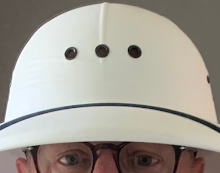There are many benefits to using salvaged lumber such as this: it's old growth so the wood is remarkably stable; no knots; super long pieces thanks to John's careful removal; and it didn't go to the landfill. Using it does require some patience to even up ends and fill old nail holes. Still, I wouldn't have it any other way.
This project got a late start in October and I'm amazed I made as much progress as I did considering it's now mid-November and winter has finally arrived in earnest. Putting up the clapboards doesn't take long. It's all the front end prep that sometimes feels like pushing a string. In this case I had to fashion up new door and window casings. We went with wide, flat stock to match the arts and crafts look of the house. Once the new casings were up and painted, we decided to add similar treatments to the corners to bring the whole thing into balance. More days. But the results are terrific. The clapboards have a 4-1/4" face to the weather to match the singles and cedar on the house.
The before and in-progress/after shots tell more of the story. Yes. The overhead doors look hideous. I know. And once I get the siding done, my plan is to rebuild the doors replacing the blank panels with tongue-and-groove bead board while attending to the weathered bottom rails. Meanwhile, I bought some "needs work" vintage arts and crafts outdoor sconces that I will restore and mount in place of the industrial light fixtures in the pictures.
To keep the general momentum going I'm planning to set up a workplace in the basement where I can prep and paint the clapboards. Then when (if?) we get a reasonable window of dry and relatively windless weather -- anything above 35 F -- I'll take the boards outside where I can cut and nail them up. The fine finishing work may have to wait until...
 |
| Garage south face before |
 |
| Southwest corner with experimental cedar shingles above |
 |
| Garage south face almost finished (doors to be done later) |
 |
| New casings and corners! |


No comments:
Post a Comment